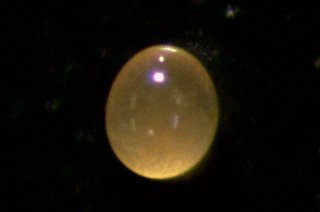
category_news
Impact of low humidity on the predatory mite Phytoseiulus persimilis
Insects and mites used in biological control of agricultural pests sometimes have to face extreme climatic conditions in fields and greenhouses. Many of them are sensitive to high temperature and low humidity. This sensitivity is often the cause of a lower efficacy of the biocontrol agents in hot and dry conditions, and increased damage on the plants.
ESR update - I study the impact of low humidity on the predatory mite Phytoseiulus persimilis. This predatory mite is used worldwide as a predator of the spider mite Tetranychus urticae. However, its efficacy decreases when it is exposed to low humidity. Previous studies explained this lower efficacy by the fact that P. persimilis eggs are highly sensitive to low humidity.
I started my project by studying the hatching rate of P. persimilis eggs under constant and variable low humidity conditions. I observed that P. persimilis eggs are highly sensitive to a constant relative humidity lower than 60%. However, if the eggs are exposed to high humidity for a few hours, after spending more than 80% of their development under low humidity, their hatching rate increases significantly. I concluded from this observation that P. persimilis eggs show a plastic response to variations in humidity. They are able to survive a long period of drought if exposed to high humidity for a few hours only. This plasticity, enhancing their chances of survival under variable humidity conditions in the field, is of adaptive significance. It appears that this predatory mite is capable of dealing with low humidity conditions more effectively than previously thought.
To better understand the effects of low humidity on P. persimilis and further improve its efficacy as a biocontrol agent in dry conditions, I am currently studying the oviposition behaviour of P. persimilis adult females under constant and variable low humidity conditions. I observe the number of eggs they lay, the level of drought-resistance of the eggs they lay, and the lifespan of the females. I also look at certain characteristics of the eggs they lay under different humidity conditions: the volume of the eggs, their chemical composition, and the structure of their external envelope. All these results are going to give us a lot of information on the real impact of low humidity on P. persimilis populations, and the reasons why this predator struggles to control spider mites in dry conditions.